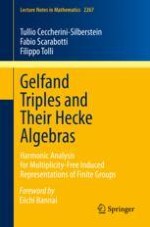This monograph is the first comprehensive treatment of multiplicity-free induced representations of finite groups as a generalization of finite Gelfand pairs. Up to now, researchers have been somehow reluctant to face such a problem in a general situation, and only partial results were obtained in the one-dimensional case. Here, for the first time, new interesting and important results are proved. In particular, after developing a general theory (including the study of the associated Hecke algebras and the harmonic analysis of the corresponding spherical functions), two completely new highly nontrivial and significant examples (in the setting of linear groups over finite fields) are examined in full detail. The readership ranges from graduate students to experienced researchers in Representation Theory and Harmonic Analysis.
